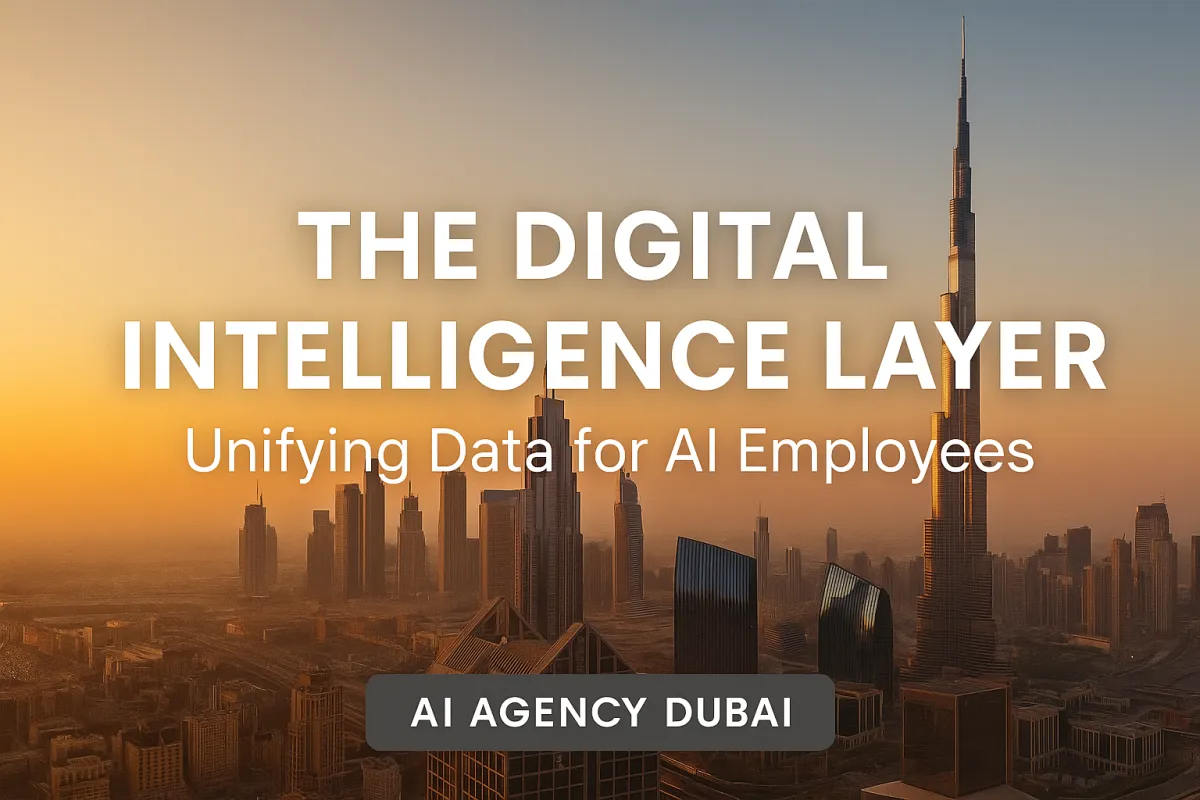
The Digital Intelligence Layer — Unifying Data for AI Employees
The Digital Intelligence Layer — Unifying Data for AI Employees
Introduction: From Data Chaos to Context-Driven Automation
Across Texas, businesses are adopting AI Employees — from real estate to logistics to healthcare. But the biggest roadblock isn’t intelligence — it’s context.
Your CRM knows the lead, but your AI caller doesn’t. Your analytics track engagement, but not intent.
The solution? The Digital Intelligence Layer — a central data framework that unifies every record, permission, and event into one clear narrative.
What the Intelligence Layer Is (and Isn’t)
The Intelligence Layer isn’t another SaaS tool. It’s the operating backbone that gives AI Employees a shared understanding of your business.
It links together CRMs, WhatsApp, email, analytics, and scheduling tools into one clean, queryable view — enabling agents to take informed action rather than isolated guesses.
Instead of managing data silos, you orchestrate information through a single, well-governed layer that supports automation from lead to close.
Identity, Consent, and Permissions
In Texas — where privacy laws are tightening and customer trust is gold — proper identity and consent management are non-negotiable.
The Digital Intelligence Layer handles this by:
Unifying Identity: matching customer records across phone, email, WhatsApp, and CRM.
Consent Management: ensuring every message and call meets U.S. privacy expectations.
Role-Based Access: giving AI Employees limited scope for specific actions like booking, quoting, or payment reminders.
This isn’t just compliance — it’s brand protection.
Events to Track: Lead, Intent, Outcome
AI works best when it sees the full picture.
That’s why the core of the Intelligence Layer is a continuous event stream that logs:
Leads: where they came from and what triggered their interest.
Intent: what they asked for or clicked on.
Outcome: what happened next — booked, declined, or ghosted.
With this clarity, AI Employees in Texas firms can follow up intelligently, reducing missed opportunities by over 50%.
Minimum Viable Warehouse and Reports
Start simple.
The minimum viable Intelligence Layer includes:
A clean contact table with unified IDs.
Event tracking for engagements and outcomes.
Visual dashboards showing performance, response time, and conversion.
Texas businesses use this data not just for analytics — but to train AI behavior, evaluate messaging tone, and forecast customer lifetime value.
Privacy-by-Design for POPIA/GDPR
While Texas operates under different legal frameworks than the UAE or EU, responsible data design follows the same ethics: minimal collection, secure storage, and full transparency.
Your Digital Intelligence Layer should be:
Encrypted by default — both in storage and transit.
Auditable — logging every agent’s data access.
Compliant-ready — should future state-level privacy laws align with GDPR.
This forward-thinking approach protects your customers — and your brand — long-term.
Conclusion: Intelligence Is Nothing Without Integration
AI Employees are only as smart as the data layer beneath them.
By investing in a unified Digital Intelligence Layer, Texas companies create systems that act with accuracy, empathy, and measurable accountability — all powered by clean, contextual data.
Useful Links
👉 AI Agency Texas — Contact Page
👉 AI Agency Texas — Services
